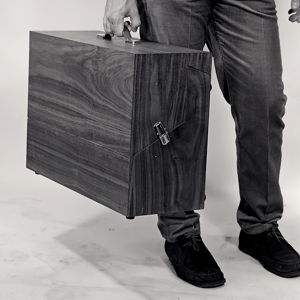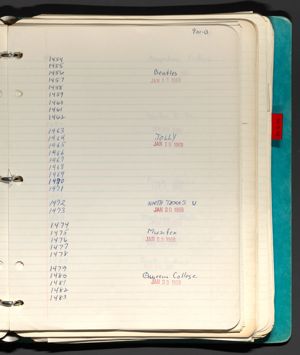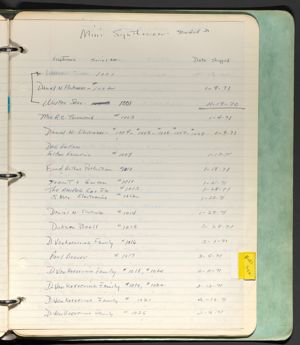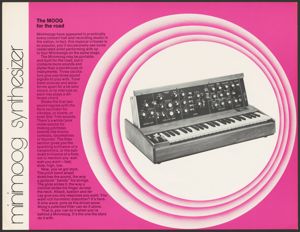From Modular to Minimoog
The Moog Synthesizer had an enormous impact on rock music. It began to attract attention at the famous Monterey Pop Music festival in 1967, where noted Moog musicians Paul Beaver and Bernie Krause, Bob’s West Coast sales representatives, set up a display of the latest modular gear. Despite the prohibitive cost, Krause sold synths to members of West Coast bands such as the Byrds and the Monkees, and he helped the Doors with Moog-generated vocal effects on their song “Strange Days” (1967). The Beatles made full use of the synthesizer’s range as a melody instrument and for surreal sounds on Abbey Road (1969). George Harrison recorded an entire album of his experiments with the Moog Synthesizer called Electronic Sounds (1969).
In the era of so-called Progressive Rock, the Moog became an instrument for virtuoso keyboard soloists, enabling them to rival the sonic energy and star power of the rock guitarist. As part of the band Emerson, Lake and Palmer, Keith Emerson made the Moog famous. One of the definitive rock solos on the Moog is played by Keith at the end of their hit song “Lucky Man” (1970). Rick Wakeman reputedly used up to six Minimoogs on stage with his band Yes. Meanwhile, outfits such as Tonto’s Expanding Head Band made the Moog a perfect musical accompaniment for experiencing drug-fueled psychedelic trips.
Ultimately, the Moog made an impact in almost every genre of popular music, with Stevie Wonder’s use on his breakout album Music of My Mind (1972) being particularly influential. The Rolling Stones, however, never used their Moog on a recording. Mick Jagger took Moog lessons and was considering making the Moog his instrument in the band. It featured in the cult film Performance (1970), in which Mick can be seen noodling with his Moog.
First produced in 1970, the Minimoog was a portable version of a synthesizer with a built-in keyboard. The wheels to the left of the keyboard, known as “pitch” and “modulation” wheels, were particularly popular with musicians and became a standard feature on almost every subsequent synthesizer. Just as he did when marketing Theremin kits and parts ten years earlier, Bob himself posed for early Minimoog sales brochures and advertising campaigns. Those are his legs in this promotional photograph.
Supplied by Roger Luther at MoogArchives.com.
The Moog Company kept an order book for every synthesizer sold. Inventory was tracked by listing the serial numbers of the modular items shipped, the dates shipped, and to whom the order was sent. One of those books, shown here, includes the entry documenting the purchase of a modular synthesizer by the Beatles in January of 1969.
On loan from the collection of Roger Luther.
This shipping log shows that the first Minimoog, number 1001, went to Walter Sear, Bob’s New York salesman. The most important purchaser of Minimoogs was Florida salesman and Moog visionary David Van Koevering, who bought the instrument in batches as he set up a retail music store network around America. Van Koevering was eventually brought into the Moog company when it moved to Williamsville, New York, as Vice President for Sales and Marketing.
On loan from the collection of Roger Luther.
The Minimoog is regarded as the classic portable synth. It was still relatively expensive, costing the equivalent of a rock band’s touring van. As promoted in this advertising copy, “The Minimoog might be portable and built for the road, but it contains more sounds and styles than a storehouse of instruments.”
This Minimoog is a recreation of the vintage Model D analog synthesizer first sold by R.A. Moog Co. in 1970. The original Minimoog was designed as an affordable, portable, simplified alternative to larger more complex modular synthesizers, and was the first synthesizer sold in retail stores. In 2016, Moog Music, Inc., released a new version of the Minimoog, shown here.
On loan from Moog Music, Inc.




